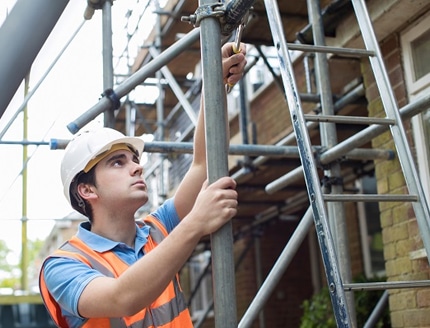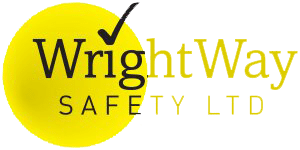Scaffolding Inspection
To ensure it is safe, scaffolding needs to be checked regularly. We can help make your building project run smoothly by providing initial inspections and periodic inspections on-site. Our inspections are performed by licensed, qualified experts. Ace Scaffolding uses the leading scafftag system for safety and quality assurance. Ace Scaffolding will carry out a site inspection, and carry out dismantling works in accordance with safety procedures. We carry out regular inspections and, if necessary, maintenance so that you’ll have your scaffolding available at all times.
Our excellent record is attributable to the actions of our dedicated on-site health and safety experts overseeing your project; they understand the risks and will keep your crew safe. Ace Scaffolding provides prompt advice on scaffolding for domestic and commercial customers. We will help you find a solution to your scaffolding problems. Need guidance? Call our experts today We Are Also Available to Offer Scaffolding Related Advice
We Are Also Available to Offer Scaffolding Related Advice

Scaffolding Inspection Basics
Independent statutory scaffold inspections and site scaffolding monitoring services are available in accordance with regulation 12 (7) of the 2005 work at height regulations. Ace Scaffolding provides independent scaffolding inspections on behalf of scaffolding customers throughout the Shoreham area. Users should confirm the safety features of the structure and make sure it is ready for operations. Our independent inspectors advise you professionally and impartially on scaffolding standards.
Why Do You Need to Inspect Scaffolding?
Scaffolding is one of the most versatile forms of access equipment. It allows safe access to scaffolding, ladders and stair towers for painting, insulation and electrical work. When in use, large framed scaffolding is prominently displayed on construction sites. For renovation work, it could be the first sign that a building project has started from the outside. Working at heights, however, could be highly risky. In 2017/18, there were 35 fatal crashes from height accidents. High-altitude falls are responsible for over 8% of non-fatal RIDDOR accidents in the construction industry according to HSE statistics. HSE tracks all companies (and directors) whose scaffolds are below the required standards.
When Must Scaffold Inspections Be Done?
In compliance with the Working at Heights Standard of 2005, a qualified inspector must check your scaffolds before using them for the first time and every week afterwards until its removal. Due to its extensive exposure to the elements, it is vital you confirm that your scaffolding is in safe and sound condition at all times. It’s the responsibility of the renter/user to ensure that the scaffolding has been properly inspected.
Our Guarantee
- Over Six Years Experience
- Unrivaled Experience
- An Exceptional Service
- Unbeatable Value For Money
- Industry-approved Scaffolders
- A Full Range of scaffolding Services
- Professional, Reliable and Diligent
- 100% Safety and Satisfaction
How Often Should Scaffolding be Inspected?
HSE guidelines insist that scaffold inspections should be performed by skilled personnel who have adequate knowledge of the structure and its intended uses, the design of the scaffold, and inspection and maintenance requirements. The CISRS (Construction Industry Scaffolders Record Scheme) qualification is an essential requirement for scaffold inspectors.

It demonstrates competence, professionalism, and the importance of health and safety. However, someone who has received training in inspecting a specific type of scaffold system from an associated supplier or manufacturer can inspect the scaffold structure based on the experience and expertise. A person may be certified to inspect a basic scaffolding structure if they’ve been trained in scaffold inspection methods, and have successfully completed an inspector certification course. For each inspection, a written report must be kept and updated at the site until work is completed. Even when the construction has been completed, the reports must be kept for another three months at a specific location. The scaffold inspection report should identify any deficiencies or situations that could pose a risk to health and safety and any corrective action taken, even if such action is taken without delay.
This makes it easy to spot recurring problems. Make sure each scaffolding report includes the following information: Name and address of the person or company for whom the inspection exercise was executed. The position and name of the inspection official. The project time, date, and plate. A description of the workplace or where the scaffolding equipment was inspected. As part of the inspection process, any defect or other physical problem that could endanger a person’s health or safety and details on how to fix them must be revealed on the report.
Details of other measures deemed necessary. If you’re looking for more information on scaffolding inspections, Ace Scaffolding Shoreham is happy to help. We provide top-to-bottom scaffolding inspections, and monitor scaffolding activities. If you’re a contractor wishing to use scaffolding on your project, we will complete an independent scaffold tower inspection of the completed structure, as well as any critical support systems. We provide a range of training programmes for scaffold inspectors at all levels.
How Often Should A Harness Be Inspected?
There are three recommended inspection levels:
Pre-Use Testing
Users will perform this inspection before each shift to ensure that there are no defects on the surface of the scaffolding. Defects should be reported to the employer.
Detailed Inspection
An official scaffold inspection should be conducted in 6-month intervals. It is recommended that the interval be reduced to at least once every three months for frequently used equipment, especially those used in difficult locations such as a steel assembly, scaffold demolition, or steel towers and mast areas.
Interim Inspection
These inspections are detailed and documented supplements to pre-use inspections and detailed inspections. Interim inspections may be required, so that detailed checks can take place if the employer’s risk assessment has exposed a risk which could lead to substantial deterioration and could compromise lanyard safety before the due date of the next detailed inspection. The frequency of these inspections is dependent on usage. The more the asset is used the more frequently they should be analysed. Appropriate examples can include the risk of working in harsh environments involving the use of chemicals, paints, and sandblasting. You can take advantage of periodic interim inspections when you cannot determine the nature of the substance from which a compound is made.
Scaffolding Types

Who is Responsible for the Scaffold Inspection?
The Health and Safety Regulation of 1999 demands that employers conduct risk assessment to ensure the health and safety of their workers and the general public. The 2015 Construction Regulation (Design and Administration) holds commercial customers responsible for ensuring the health and safety of all stakeholders on a project. For domestic customers, the builder, scaffolder or contractor using the scaffolding is responsible for maintaining on-site safety.
Legal Requirements for Scaffold Inspection
Scaffolding must be checked before use and confirmed in the initial test report or in a handover protocol. Regular inspections every week is necessary to ensure the safety of a scaffolding system. Scaffolding must be inspected for events that could affect the structure’s safety, such as changes, adverse weather, or an earthquake. The format of an inspection report should be carefully selected to ensure the reproducibility; to ensure its printable and also tamper-proof.
The inspector is responsible for recording information on the inspection in a report for the client/employer within 24 hours of its completion, including observations and recommendations. The employer will need to keep a copy of the inspection report on the job site until the work is completed, and then keep a copy in for another 3 months.
We Are Also Available to Offer Scaffolding Related Advice
An Inspection Report Will Include the Following Information:
The address, as well as the name of the person on whose behalf the inspection was carried out. The address where the inspection took place. The scaffolds description checks. Time and date of inspection. Information about issues that have an impact on the health and safety of project stakeholders on-site. Details on solutions applied to the issues identified during the inspection. Details on noteworthy moves. The name and position of whoever is put in charge of the inspection report.
Recommendations by NASC
Some of the recommendations of NASC are
If the employer proves that a CISRS card holder possesses adequate experience and expertise, they will be regarded as qualified to carry out scaffold inspections. CISRS Booklet Appendix A-F pages 37-52 is the place to look if you need to get CISRS course content. For someone to be able to inspect a basic scaffold structure, he or she has to go through the CISRS Basic Scaffold Inspection Training Scheme Course SITS so that the person would be regarded as qualified to inspect a basic scaffold structure. The CISRS Advanced Scaffold Inspection Training Scheme is developed and designed by experts in the field of scaffolding, successfully passing the knowledge test provides you with advanced knowledge to assist you to conduct inspection of complex scaffold structures.
Experienced scaffolding inspectors, managers, and supervisors are those who should partake in this course, as they have the responsibility of commissioning, inspecting and handing over scaffolds including filing inspection reports in accordance with Work at Height Regulations of 2005. A CISRS SITS qualification is only valid for 5 years. After the expiration of five years, each delegate will need to renew their CISRS SITS card by re-sitting the course. This is the only way to remain qualified inspectors. In order to inspect the scaffolds, professionals have to obtain certain knowledge about the particular systems, including how they were designed and assembled. There are several ways to achieve this including through the manufacturer, the supplier, or via CISRS-recognised training providers.
We Are Also Available to Offer Scaffolding Related Advice
Our Emergency and Monitoring Scaffolding Inspections
We can provide emergency inspection services and run scheduled exercises for your scaffold systems. We provide digital photographs and a detailed report after the scaffold inspection.
Frequently asked questions
Get in Touch With us for Your Scaffolding Hire Quotes












